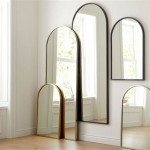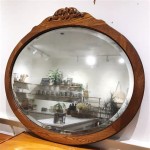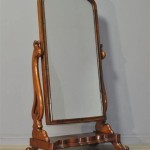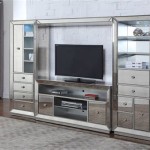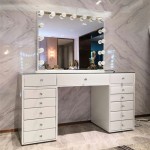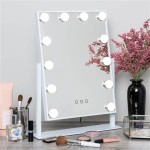```html
Two-Way Mirrors: Understanding Their Functionality and Applications
A two-way mirror, also known as a one-way mirror or half-silvered mirror, presents a unique optical illusion. It appears as a regular mirror on one side, reflecting the image back at the observer. Conversely, from the opposite side, it functions as a window, allowing visibility through to the other room. This fascinating characteristic stems from a carefully balanced interplay of reflection and transmission of light.
The construction of a two-way mirror involves a thin, semi-transparent coating of metal, typically aluminum or silver. This coating is applied to a sheet of glass or acrylic. Unlike a standard mirror, which boasts a thick, opaque metallic layer that reflects nearly all incident light, the coating on a two-way mirror is deliberately thin. This thinness allows a portion of the light to pass through the mirror, while the remaining portion is reflected. The ratio of reflection to transmission is a crucial factor determining the mirror's effectiveness.
The perceived functionality of a two-way mirror depends heavily on the lighting conditions present on either side. The room intended for observation should be significantly darker than the room being observed. This difference in illumination is essential to create the desired effect. When the observation room is dark, very little light is reflected back from that side. Consequently, the light transmitted from the brighter room on the opposite side dominates, making the mirror appear transparent from the darker room. However, for individuals in the brighter room, the stronger reflection from their side overwhelms the faint light transmitted from the darker room, leading them to perceive the surface as an ordinary mirror.
Key Point 1: The Science Behind the Illusion
The functionality of a two-way mirror hinges on the principle of light transmission and reflection. The thin metallic coating, often composed of silver or aluminum, acts as a crucial element. This coating is significantly thinner than what is found in standard mirrors, allowing light to both pass through and bounce back from the surface. The balance between these two phenomena is paramount to achieving the desired two-way effect.
The percentage of light reflected and transmitted varies depending on the manufacturing process and the specific materials used. Generally, a two-way mirror will reflect approximately 50% of the light and transmit around 50%. However, these values can fluctuate. The ideal ratio ensures that enough light is reflected to create a convincing mirror effect on one side, while also allowing sufficient light to pass through for viewing from the other. If too much light is transmitted, the mirror effect is diminished, and the observed side may appear to be looking at a lightly tinted window. Conversely, if too much light is reflected, the transmission becomes insufficient, and the purpose of observation is undermined.
It is crucial to remember that the contrasting light levels on either side of the mirror amplify the effect. The significantly brighter room illuminates the thinner metallic coating, causing a stronger reflection. This stronger reflection overwhelms any faint light transmitted from the darker room. Meanwhile, the darkened room minimizes reflection, enabling observers in this room to primarily see the light transmitted from the brighter room. Without this intentional disparity in lighting, the two-way mirror effect is significantly weakened or even completely negated.
Key Point 2: Common Applications of Two-Way Mirrors
Two-way mirrors find utility in a variety of settings, often where discreet observation or surveillance is required. One prominent application is in law enforcement and security. Interrogation rooms frequently employ two-way mirrors to allow investigators to observe suspects without their knowledge, facilitating a more natural and unfiltered interaction. This observational capability can provide valuable insights into a suspect's behavior and demeanor, aiding in the investigative process.
Retail environments also utilize two-way mirrors for loss prevention purposes. Security personnel can monitor shoppers from concealed locations, observing for suspicious behavior or potential shoplifting activities. This discreet surveillance helps deter crime and protect valuable merchandise without creating an overtly intrusive atmosphere for legitimate customers. The presence of these mirrors may also act as a deterrent to prevent these situations from rising.
Psychology and research facilities are another common setting for two-way mirrors. Researchers can observe subjects' behavior in controlled environments without directly influencing their actions. This methodology is particularly useful in studies related to child development, social interactions, and behavioral patterns. The unobtrusive observation allows researchers to gather more authentic data, free from the potential biases introduced by direct interaction.
Beyond these professional applications, two-way mirrors have also found their way into theatrical productions and haunted houses. In these settings, they are used to create illusions and surprise effects, enhancing the audience's experience and adding to the overall sense of immersion. The ability to seemingly appear and disappear or to create unexpected reflections can be a powerful tool in storytelling and creating memorable moments.
Key Point 3: Legal and Ethical Considerations
The use of two-way mirrors raises several important legal and ethical considerations. Privacy is a primary concern. Individuals have a reasonable expectation of privacy in certain spaces, such as restrooms, changing rooms, and private offices. The surreptitious observation of individuals in these locations without their knowledge or consent can constitute a violation of their privacy rights.
Many jurisdictions have laws that specifically address the use of two-way mirrors and other surveillance technologies. These laws often require clear signage indicating the presence of surveillance, obtaining informed consent from individuals being observed, or prohibiting the use of these technologies in sensitive areas. Failure to comply with these regulations can result in civil or criminal penalties.
Ethical considerations extend beyond legal compliance. Even in situations where the use of two-way mirrors is permitted under the law, there may still be ethical concerns regarding the potential for abuse or the impact on individuals' sense of autonomy and dignity. For example, observing employees without their knowledge may raise concerns about workplace surveillance and the potential for unfair treatment.
Responsible use of two-way mirrors requires careful consideration of these legal and ethical implications. Organizations and individuals should implement policies and procedures to ensure that these technologies are used in a manner that respects privacy rights, promotes transparency, and minimizes the potential for harm. Regular reviews and audits of surveillance practices are also essential to ensure ongoing compliance and ethical conduct.
The installation of two-way mirrors must also be carefully considered. The placement should not be in areas where individuals have a reasonable expectation of privacy, unless absolutely necessary and with proper legal justification and safeguards in place. Furthermore, clear signage should always be displayed to inform individuals that they may be under observation.
In addition to the above, the collected data obtained from observations via two-way mirrors should be handled with utmost care. Strict protocols should be in place regarding data storage, access, and usage. Data should only be used for its intended purpose and should be securely protected to prevent unauthorized access or disclosure. Furthermore, individuals should have the right to access and correct any inaccurate information about them.
```
Glass Two Way Mirror In Stock Custom Sizes Worldwide

Fingernail Test Comparison Between Standard Mirror And Acrylic Two Way Mirrors

How To Detect A Two Way Mirror Fingernail Test

Two Way Mirror Mirrorworld

Tips For Identifying Whether Your Mirror Is Two Way Or Not Ledmyplace

Acrylic Pmma 2 Way See Thru Mirror 3 0mm Thickness 118 12 Sizes Available

Two Way Mirror Mirrorworld

How To Tell If A Mirror Is Two Way Or Not 8 Steps With Pictures

Acrylic Two Way Mirror Buy Precision Cut 2 Mirrors

Two Way Mirror Manufacturer Of Optical Glass Acrylic 2

